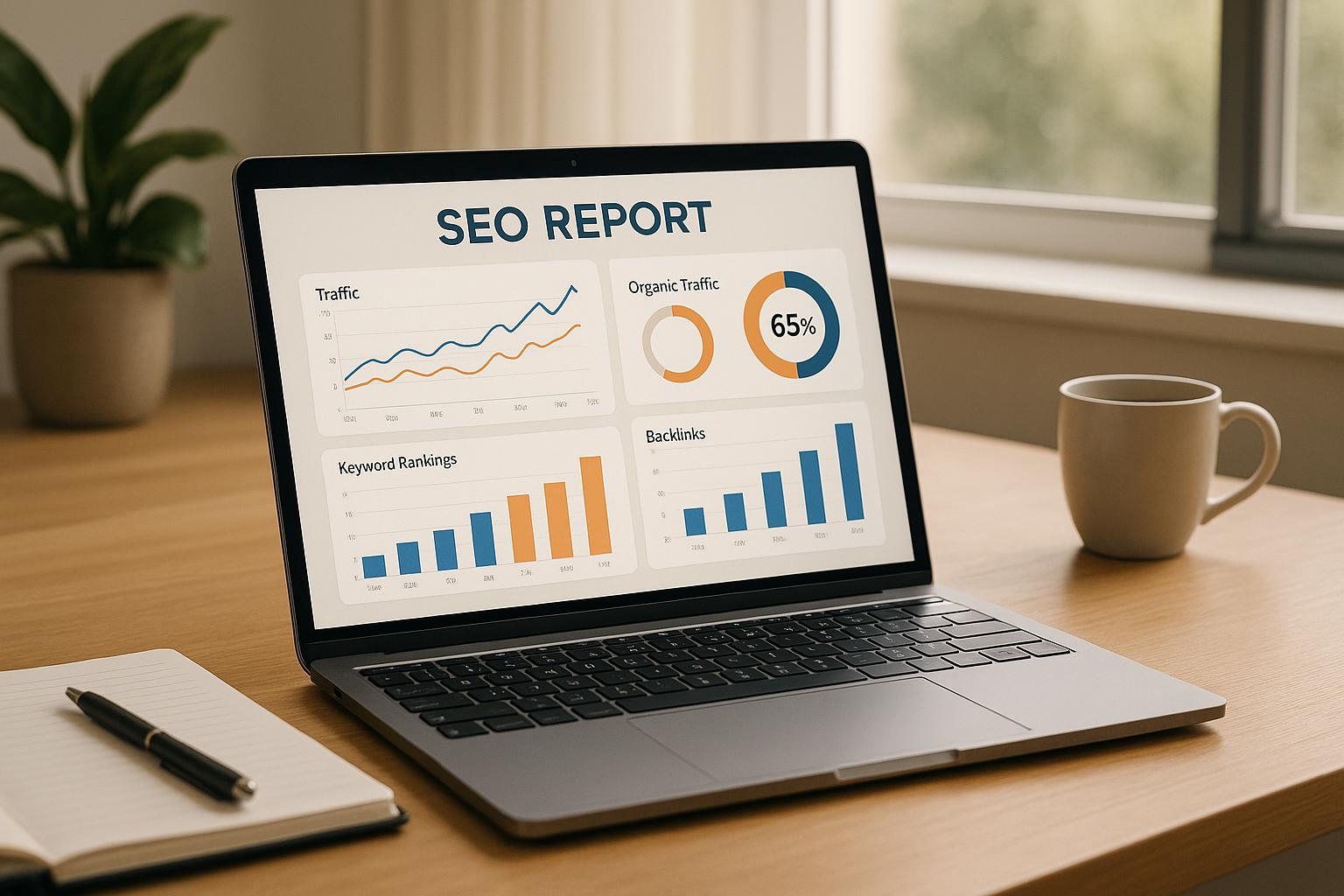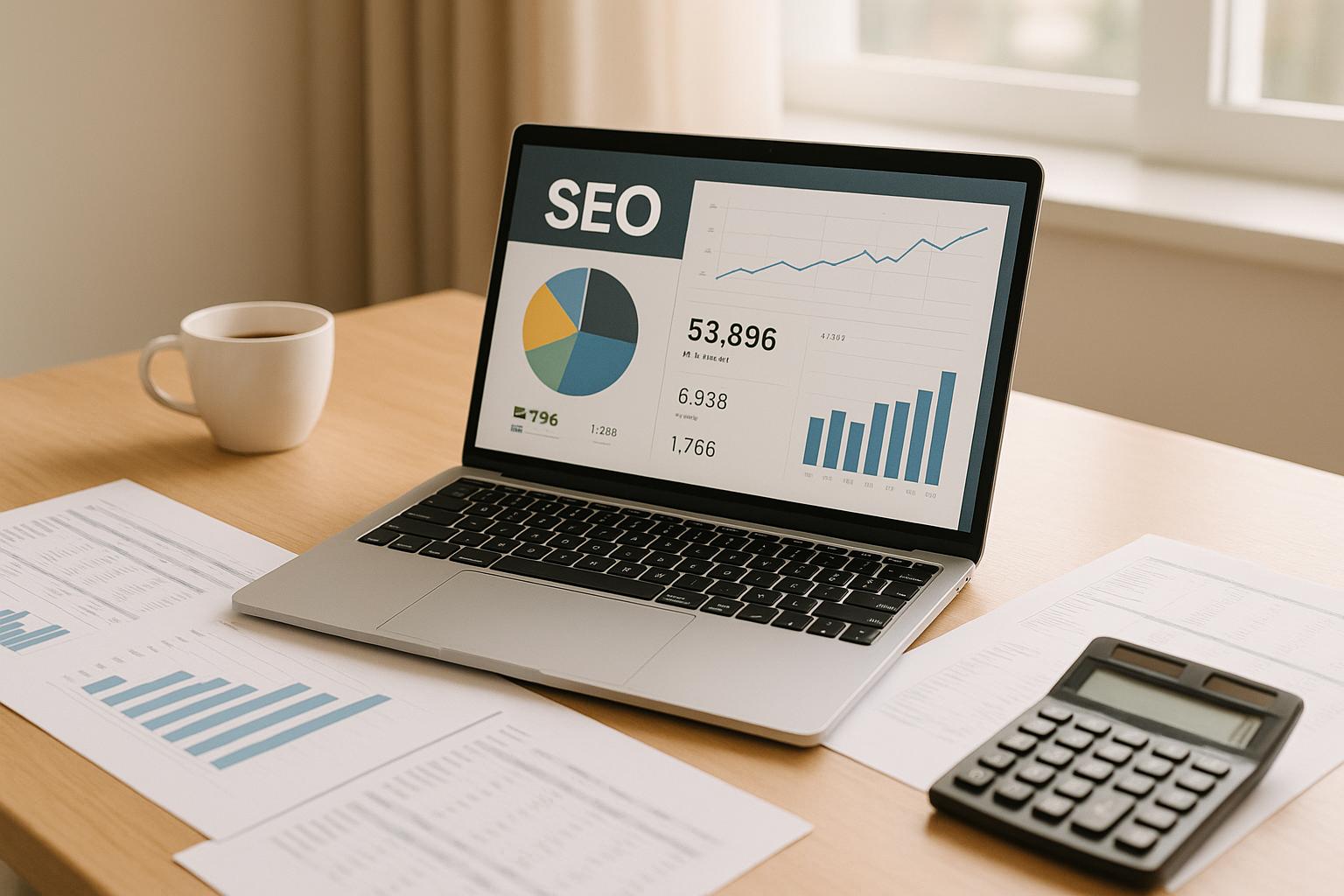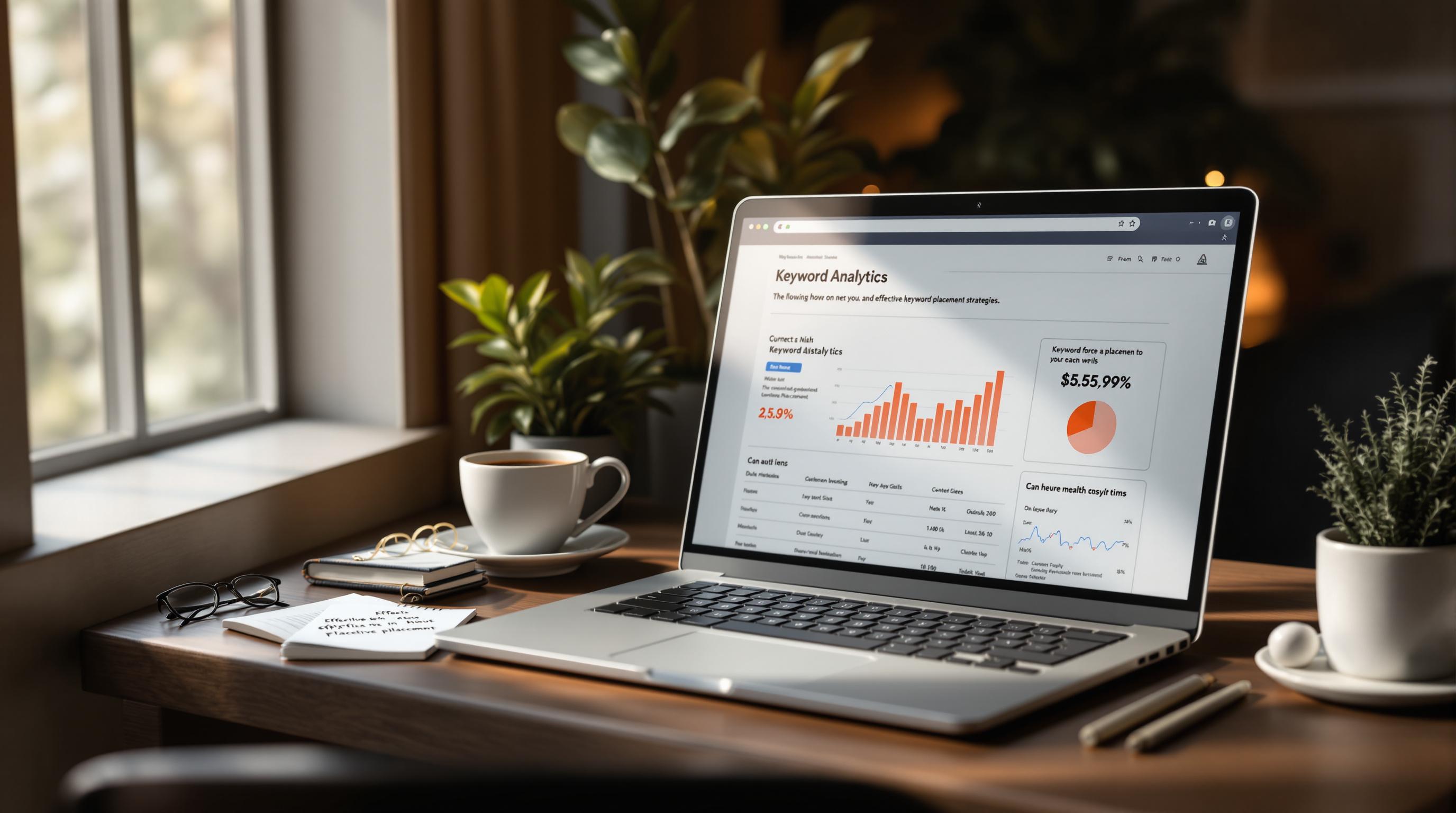Canonicalization helps search engines understand which page version to prioritize, preventing duplicate content issues and improving SEO. But mistakes can hurt your rankings. Here’s a quick overview of the 7 most common canonicalization mistakes and how to fix them:
- Using Relative URLs: Always use absolute URLs (e.g.,
https://example.com/page) to avoid confusion with domains or protocols. - Duplicate Canonical Tags: Ensure only one canonical tag exists per page to avoid conflicting directives.
- Incorrect Placement: Canonical tags must be in the
<head>section of your HTML. - Pointing to Blocked Pages: Avoid pointing canonical tags to pages blocked by
robots.txtor marked asnoindex. - Inconsistent Internal Links: Use the same URL format (e.g., HTTPS, lowercase, trailing slashes) throughout your site.
- Mismanaging Pagination: Use canonical tags to consolidate paginated content or point to a "view-all" page when appropriate.
- Missing Cross-Domain Canonicals: Use cross-domain canonical tags to consolidate ranking signals for duplicate content on multiple domains.
Quick Comparison Table
| Mistake | Why It's a Problem | How to Fix It |
|---|---|---|
| Relative URLs | Confuses search engines | Use absolute URLs with domain and protocol |
| Duplicate Canonical Tags | Weakens ranking signals | Use tools to audit and remove duplicates |
| Incorrect Placement | Search engines may ignore the tag | Place canonical tags inside <head> |
| Blocked Page Canonicals | Conflicting signals to search engines | Ensure canonical URLs are accessible |
| Internal Link Inconsistencies | Splits ranking signals | Standardize URL formats sitewide |
| Pagination Errors | Fragments ranking signals | Use "view-all" or proper pagination setup |
| Missing Cross-Domain Tags | Splits ranking across domains | Add canonical tags to duplicate pages |
Fixing these mistakes ensures your site ranks higher, avoids duplicate content issues, and improves crawl efficiency. Start auditing your site today!
Broken Canonical Tags: How to Find and Fix
1. Using Wrong Relative URLs
Using relative URLs in canonical tags can harm SEO and create indexing issues. Relative URLs, like "/products/item-1", don't include the full domain, which can lead to confusion for search engines and weaken ranking signals.
Here's why relying on relative URLs in canonical tags is problematic:
- Cross-domain issues: Search engines may struggle to determine the correct domain, particularly with subdomains.
- Protocol confusion: Without specifying HTTP or HTTPS, ranking signals can split between secure and non-secure versions.
- Wasted crawl budget: Search engines expend extra resources resolving relative URLs.
How to Use Canonical URLs Properly
- Always use absolute URLs: Include the full domain and protocol (e.g., "https://example.com").
- Stay consistent: Use the same URL format across your site.
- Check redirects: Ensure canonical URLs don’t lead to pages that redirect elsewhere.
Here’s a quick comparison of incorrect and correct canonical tag usage:
| Incorrect (Relative) | Correct (Absolute) |
|---|---|
<link rel="canonical" href="/blog/post-1" /> |
<link rel="canonical" href="https://example.com/blog/post-1" /> |
<link rel="canonical" href="blog/category" /> |
<link rel="canonical" href="https://example.com/blog/category" /> |
<link rel="canonical" href="../products" /> |
<link rel="canonical" href="https://example.com/products" /> |
Now, let’s dive into another common mistake that can disrupt proper canonicalization.
2. Adding Multiple Canonical Tags
Fixing incorrect relative URLs is just the beginning. Another big issue to watch for is having duplicate canonical tags on a single page. This can confuse search engines and weaken your ranking signals.
Common Scenarios
CMS Plugin and Template Clashes: Sometimes, multiple SEO plugins or overlapping template layers can add duplicate canonical tags. This creates uncertainty for search engines about which URL to prioritize. For example, this often happens when plugins like Yoast SEO and Rank Math are both active or when template hierarchies unintentionally layer conflicting canonical references.
How to Spot Multiple Canonical Tags
- Use developer tools to inspect the
<head>section of your page. - Run site crawls with tools like Screaming Frog or Sitebulb.
- Review the server-rendered HTML to spot duplicate entries.
Duplicate canonical tags can cause search engines to ignore your directives, especially if they point to different URLs or mix relative and absolute formats.
Best Practices for Canonical Tags
- Review your setup: Audit your plugins, modules, and templates to see what’s generating canonical tags.
- Track changes: Use version control to monitor template updates that might affect canonical tags.
- Stick to one method: Ensure you have a single, reliable approach for creating canonical tags.
To confirm your setup is working as intended, use Google Search Console’s URL Inspection tool. This can help verify that search engines are properly recognizing and following your canonical directives.
Technical Implementation Example
<!-- Correct Implementation -->
<head>
<link rel="canonical" href="https://example.com/product-page" />
</head>
Up next, we’ll look at another common mistake: placing canonical tags outside the <head> section.
3. Placing Canonical Tags Outside the Head Section
Canonical tags should always be located within the <head> section of your HTML document. If they are placed in the <body> or anywhere else, search engines might ignore them, which can render your canonicalization efforts useless.
Here’s an example to clarify:
<!-- Incorrect Placement -->
<body>
<link rel="canonical" href="https://example.com/page" />
</body>
<!-- Correct Placement -->
<head>
<link rel="canonical" href="https://example.com/page" />
</head>
Up next, we'll look at issues with canonicalization on blocked pages.
sbb-itb-5be333f
4. Setting Canonicals to Blocked Pages
Using canonical tags to point to pages blocked by robots.txt or marked with noindex creates confusion for search engines. This conflict can hurt your site's indexability and SEO efforts.
Here's why this happens:
- A canonical tag tells search engines, "This is the preferred version of the page."
- But
robots.txtornoindexsays, "Don’t access or index this content."
When these signals clash, search engines might ignore your canonical tags altogether. For instance, if your product page at /products/item-1 has a canonical tag pointing to /products/main-item, but /products/main-item is blocked by robots.txt, search engines can't confirm the relationship. This can lead to duplicate content problems.
Example of the Issue
<!-- Page A: /products/item-1 -->
<head>
<link rel="canonical" href="https://example.com/products/main-item" />
</head>
<!-- Page B: /products/main-item -->
<meta name="robots" content="noindex" />
How to Fix It
- Audit canonical tags: Use tools like Screaming Frog or Sitebulb to check if canonical URLs are accessible.
- Ensure alignment: Make sure your
robots.txtand meta robots directives don’t conflict with your canonical tags. - Remove blocking directives: If the canonical page should be indexed, remove any
noindexorrobots.txtblocks. - Update canonical tags: Point them to URLs that search engines can access.
- Drop the canonical tag: If the page is meant to stay blocked, remove the canonical tag entirely.
By keeping your canonical tags consistent with other SEO directives, you can prevent confusion and improve your site's performance.
Next, we’ll dive into how internal links and URL inconsistencies can impact your SEO.
5. Using Different URLs in Internal Links
Consistent internal linking is just as important as proper use of canonical tags when it comes to maintaining your site's SEO health. While Section 1 emphasized using absolute URLs for canonical tags, internal links also need to follow a single format to avoid confusion for search engines.
When you link to the same content using different URL formats, it can create unnecessary complications. Common inconsistencies include:
- Variations in domain (e.g.,
wwwvs. non-www) - Differences in protocol (e.g.,
HTTPvs.HTTPS) - Trailing slash inconsistencies
- Variations in path formatting
- Letter case discrepancies
For instance, all of the following URLs might lead to the same page, but they are formatted differently:
https://www.example.com/product
http://example.com/product/
https://Example.com/Product
Keeping URLs Consistent
1. Standardize Your Format
- Stick to HTTPS and decide on either
wwwor non-wwwfor your domain. - Use lowercase letters for all URLs.
- Be consistent with trailing slash usage (either always include it or never).
2. Technical Implementation
Here’s an example of how you can enforce consistency using an .htaccess file:
<!-- Example for .htaccess file -->
RewriteEngine On
RewriteCond %{HTTP_HOST} ^example\.com [NC]
RewriteRule ^(.*)$ https://www.example.com/$1 [L,R=301]
3. Regular Auditing
- Tools like Screaming Frog can help you inspect your internal link structure for inconsistencies.
- Review your XML sitemaps to ensure they align with your chosen URL format.
URL Standardization Guidelines
| Component | Preferred Format | Example |
|---|---|---|
| Protocol | HTTPS | https://example.com |
| Domain | Stick to one version | www.example.com |
| Case | Use lowercase | /blog/article-name |
| Parameters | Only keep essential ones | ?id=123 (keep) |
| Slashes | Consistent usage | /category/product/ |
6. Mishandling Paginated Content
Paginated content can hurt your SEO efforts by splitting ranking signals and creating duplicate content issues.
Common Pagination Canonicalization Mistakes
-
Self-Referencing Canonicals on All Pages
If each paginated page points to itself with a canonical tag, it fragments ranking signals. For example:
This setup prevents search engines from understanding the connection between the pages.<!-- Page 1 --> <link rel="canonical" href="https://example.com/blog?page=1"> <!-- Page 2 --> <link rel="canonical" href="https://example.com/blog?page=2"> -
Incorrect View-All Setup
Canonical tags should point to a "view-all" page where possible. This consolidates ranking signals and ensures search engines see the entire content as a single entity.
These errors make pagination even trickier to manage, adding to the challenges of proper canonicalization.
7. Missing Cross-Domain Canonicals
When the same or similar content appears on multiple domains without a canonical tag, search engines struggle to determine which version to prioritize. This confusion can split ranking signals, ultimately lowering the visibility of your preferred page in search results.
To fix this, use a cross-domain canonical tag on duplicate pages. For instance, if you republish an article on another website, include this tag on the duplicate page to direct search engines back to the original source:
<link rel="canonical" href="https://original-domain.com/original-page-url" />
This approach helps consolidate ranking signals across domains, building on earlier strategies to improve search visibility.
Conclusion
Getting canonicalization right is crucial for maintaining your site's SEO health. Mistakes like incorrect URL formats or misplaced tags can seriously impact your rankings and user experience.
Regular SEO audits are a must to catch and fix canonicalization issues. Focus on these key areas:
- Duplicate canonical tags: Ensure there are no conflicting tags.
- Tag placement: Canonical tags should always be in the
<head>section. - URL formatting: Confirm all URLs are properly structured.
- Cross-domain setups: Check for correct implementation across domains.
- Internal links: Keep linking consistent and logical.
These checks not only fix current problems but also help you avoid future ones.
If you need expert help, check out the Top SEO Marketing Directory (marketingseodirectory.com). They offer a range of tools and services, from free resources to advanced enterprise solutions, designed to handle technical SEO and canonicalization.
Canonicalization isn’t a one-time task - it demands regular attention. Plan quarterly audits to stay on top of issues and keep your site performing at its best. By staying proactive, you strengthen your site's SEO and improve its overall performance.


